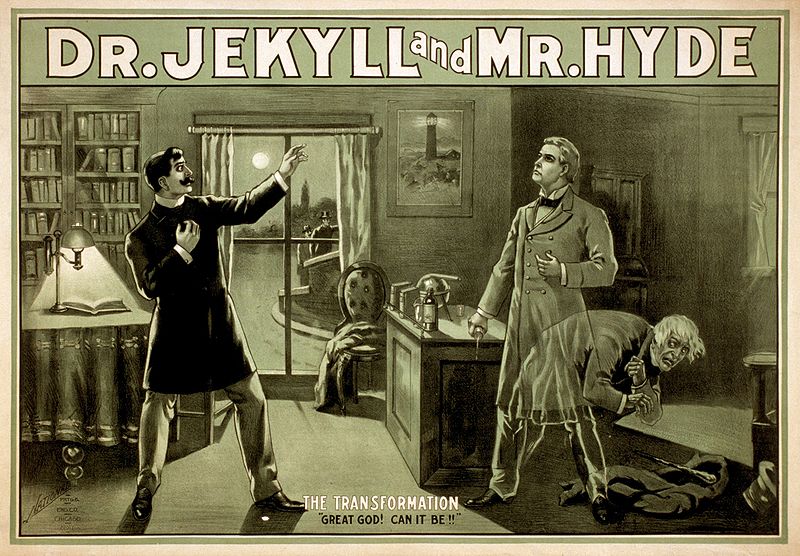
Although the original publication date of Strange Case of Dr Jekyll and Mr Hyde is listed as 1886, apparently it was actually published in an edition of 3000 copies in December of 1885. The booksellers, it seems, would not take a chance on that title until after the Christmas rush had died down and after it had been reviewed by the Times. Subsequently, the Strange Case of Dr Jekyll and Mr Hyde went on sale in January of 1886. The first edition had the unusual feature of a publication date on the title page that was corrected by hand with pen and ink. (1)
Robert Louis Stevenson wrote his classic tale of a split personality at Bourenmouth, in his usual state of high strung nervousness. It is said that the story originated in a dream – a nightmare – and was improved based on suggestions from Stevenson’s wife, Fanny Osbourne.
While in Bournemouth, the Stevensons were visited by the young painter, John Singer Sargent, who captured them in a famous portrait. In that painting, Stevenson is pacing madly around – his habit while writing or thinking – and Fannie sits casually on a couch, wearing an Indian sari. (2)
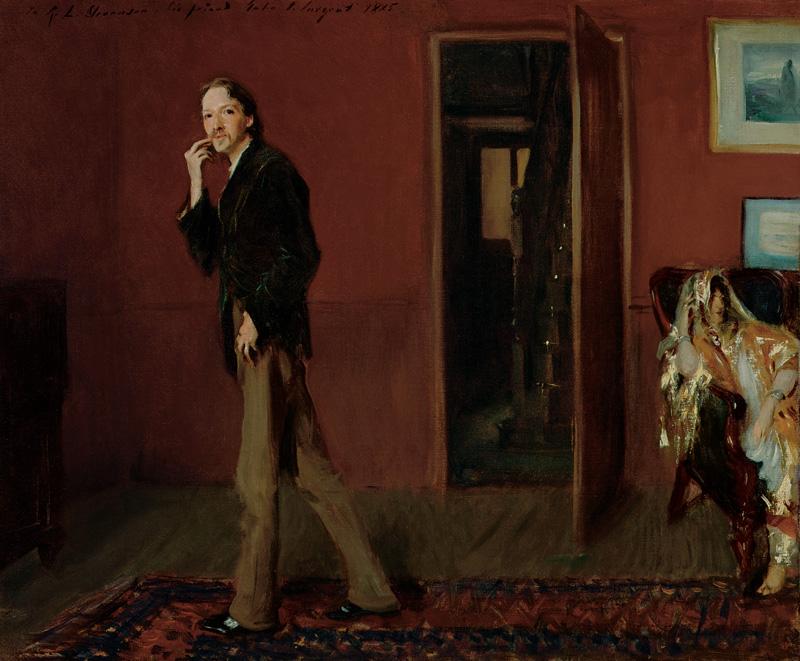
Stevenson and his wife by John Singer Sargent, (1885). src
The book became a sensation in London, and its popularity attracted impresarios to take on the dual role of the scientist and his bestial alter ego. Interestingly, the world premiere of the first Jekyll and Hyde adaption for the stage was held in Boston, in 1887, with a book written Thomas Russell Sullivan. One thing about that Sullivan fellow: well, far out ‘stache, brother!
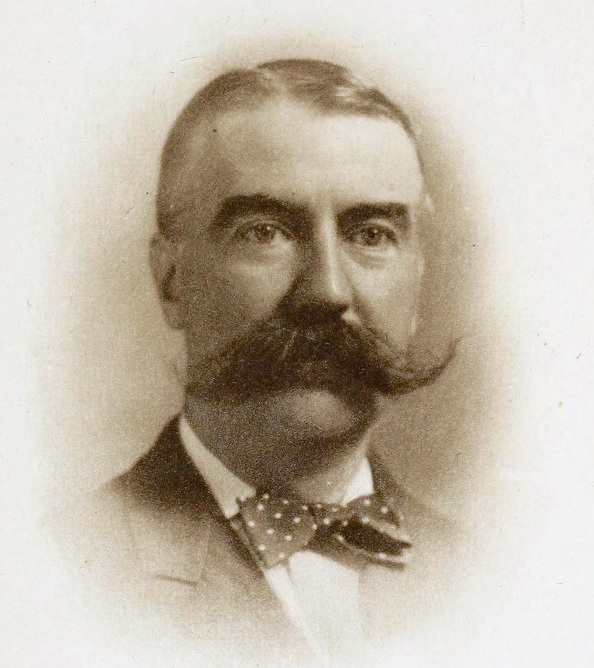
Thomas Russell Sullivan by . src
Sullivan was actually recruited to the task by the actor Richard Mansfield, who became well-known for his portrayal of the over-zealous Doctor and the wild killer inside him. (3)
Only three days after the show opened at London’s Lyceum Theatre, (in those days managed by none other than Bram Stoker), Martha Tabram was found murdered in Whitechapel of London’s East End. This was the first of a series of murders that later became associated with Jack the Ripper.
So convincing was the performance of Richard Mansfield, as he transformed from the earnest physician, Dr. Jekyll, into the madman, Mr. Hyde, that people suspected him of being the real murderer. (4) He went on to reprise the role many times over the next twenty years.
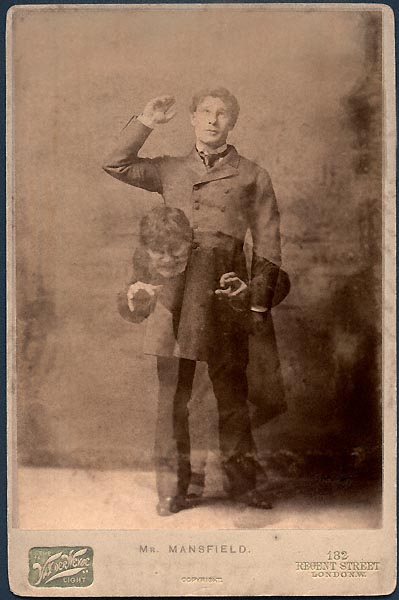
Mansfield as Jekyll and Hyde publicity photo by Henry Van der Weyde. src
The first film production of Jekyll and Hyde featured King Baggot (1913) whose transformation scene made use of early cross-fade technique, and was the first Universal Studios horror film.
In 1920, no less than three film adaptions of Jekyll and Hyde appeared on the silver screen. Two of them were produced in Hollywood, including Paramount’s iconic version starring John Barrymore.
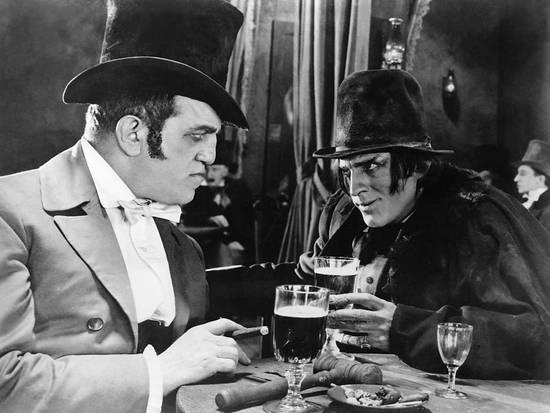
Dr. Jekyll and Mr. Hyde still of John Barrymore as Hyde (1920). src
Also released in 1920 was a film version starring Sheldon Lewis from the Pioneer Film Corporation, and in Germany: Jansukopf directed by F. W. Murnau (which has been lost).
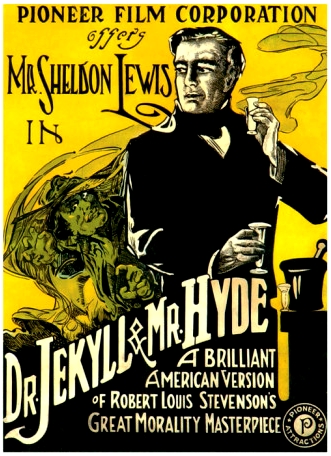
Dr. Jekyll and Mr. Hyde poster for Pioneer Films verson (1920). src
As if Jekyll and Hyde’s Self–Other internal conflict and its overtones of split personality was not enough fodder for the big screen, other film adaptions were later spawned from the storyline. For example, the weird classic The Son of Dr. Jekyll (1951), with Louis Hayward.
In this version, the intrepid son must pick up where his father left off, after having been tossed out the academy for his occult practices. Amidst plenty of unconvincing tinkering around with flasks of smoking and bubbling beverages, there are some more realistic images of the Doctor’s nervous fingers tapping out measures of white powder on little squares of paper, followed by sudden bursts of anger and agression, like swatting a whole rack of glass vials off his workbench.
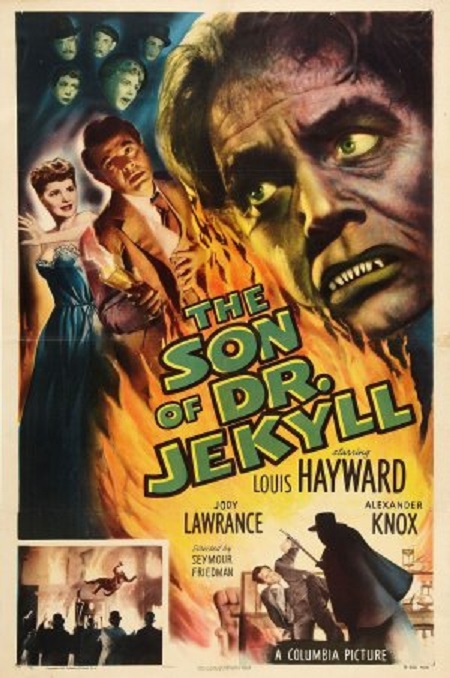
The Son of Dr. Jekyll poster for Columbia Pictures (1951). src
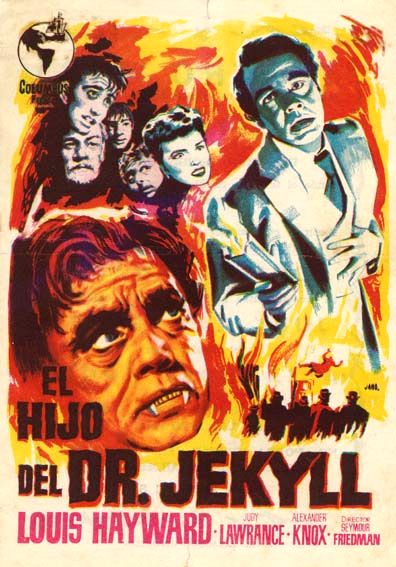
El Hijo del Dr. Jekyll poster for Spanish language version Columbia Pictures (1951). src
And let us not forget the crazy Hammer Films mash-up from 1971, Dr. Jekyll and Sister Hyde, where the the story gets mixed together with the Ripper murders, along with another historical case of grave-robberies that occurred more than half a century earlier.
In Dr. Jekyll and Sister Hyde, the Doctor procures fresh cadavers, (supplied by the time-out-of-joint murderers Burke and Hare). Jekyll extracts hormones from the corpses and mixes them into his fearsome potion, which then has a double effect: turning him into a wild beast, and changing his gender to female. Martine Beswick starred as Sister Hyde, in what can only be considered as the moment when cinema progressed from transvestite to trans-gender roles.
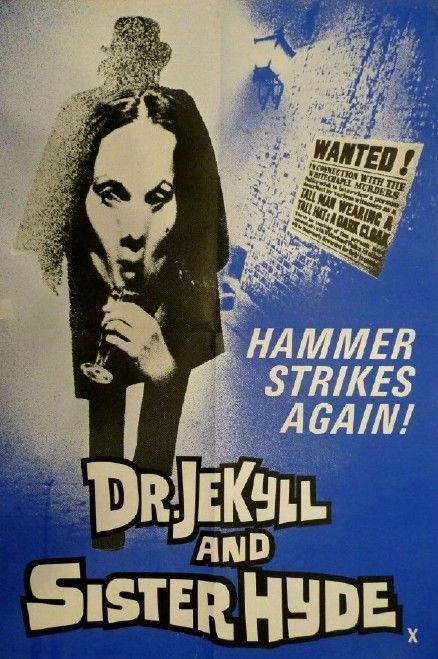
Dr. Jekyll and Sister Hyde poster for Hammer Films (1971). src
Notes:
“Jekyll and Hyde was inspired initially by a nightmare. Stevenson had writtern a straightforward horror story, but his wife suggested more could be done with it – for example the allegorical undertones and ideas of duality found in the published version. Stevenson burnt his original manuscript and began again, re-writing the entire novel in three days.” justcollecting
Shortly before his death Stevenson wrote, “I cannot get used to this world, to procreation, to heredity, to sight, to hearing; the commonest things are a burthen. The prim obliterated polite face of life, and the broad, bawdy, and orgiastic—or maenadic—foundations, form a spectacle to which no habit reconciles me.”
Jekyll and Hyde. “The Double Life of Robert Louis Stevenson” by Marogt Livesey, in The Atlantic (Nov 1994)Henry van der Weyde studio (“The Van der Weyde Light”) was located at 182 Regent Street, London. src
“Richard Mansfield was so good at playing Jekyll & Hyde, people thought he could be Jack the Ripper”
by Goran Blazeski, (Oct 16, 2016) srcDr. Jekyll & Mr. Hyde starring King Baggot, Universal (1913) src)
- Dr. Jekyll & Mr. Hyde starring Sheldon Lewis, Pioneer Films (1920) src
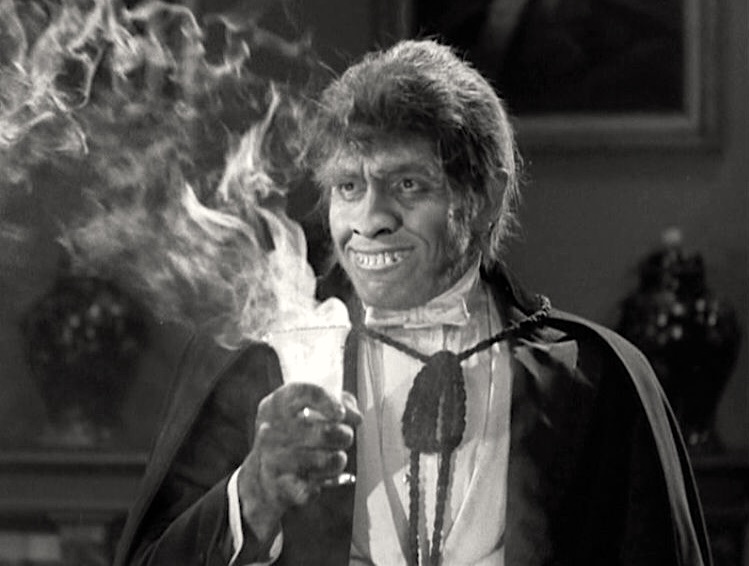
_Dr. Jekyll and Mr. Hyde__ Frederic March with the potion (1931). src